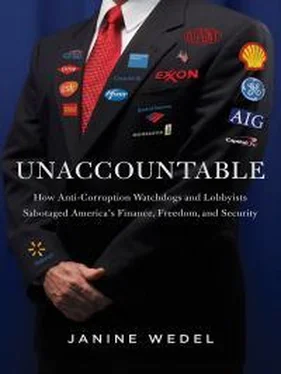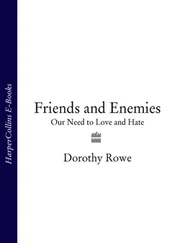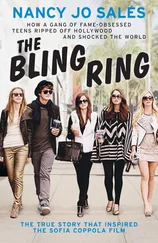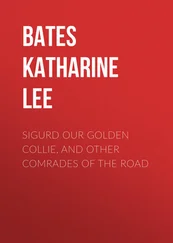The Pew Center took up the issue in 2011. After an initial look at forty-six sites that fit the nonprofit model, representing news sites that skew both liberal and conservative, it found one key issue in common: a real lack of transparency about the true source of funding. “While they may have been forthcoming about who their direct funders were, often the funders themselves were much less clear about their own sources of income. This effectively made the first level of transparency incomplete and shielded the actual financing behind the news site. The chief funders listed for nearly two-thirds of the sites studied—twenty-eight in all—did not disclose where their money came from.” 76
The sites also tended to produce material that mirrored the ideology of their benefactors, despite presenting themselves as serving the civic-minded role that traditional media (warts and all) once held. One example involved an online news/advocacy outlet called the Fiscal Times, devoted to monitoring America’s budget deficit. The Fiscal Times is backed by longtime deficit hawk and billionaire Pete Peterson, who founded the advocacy group Concord Coalition. In 2009, the Washington Post ran a story in partnership with this “news” outlet. The article argued that there was apparent growing support for action on the deficit, mentioning the Concord Coalition, while failing to mention that both the Fiscal Times and the Concord Coalition are funded by Peterson. (Interestingly, part of the Washington Post’ s defense of its omission when this came to light was that the two writers of the piece were “veteran” journalists, including one who had previously worked at the Post . 77This is another case of the complications involved when old-school journalists find jobs at novel, boundary-defying outlets.)
It is telling that the biggest contributor to journalism among American foundations, the Knight Foundation—the philanthropic arm of the once powerful Knight-Ridder family news empire—has rolled with the times. Rather than focus on the loss of old-school journalism, Knight has wholeheartedly embraced the new model. In a paper called “From Journalism to Information: The Transformation of the Knight Foundation and News Innovation,” a professor who studied Knight’s involvement reported that “the Knight Foundation has sought to change journalism by renegotiating its boundaries. Namely, by downplaying its own historical emphasis on professionalism, the foundation has embraced openness to outside influence—that is, the wisdom of the crowd, citizen participation, and a broader definition of ‘news.’” 78
There are, however, genuine bright spots. Organizations and initiatives started by the investigative reporter Charles Lewis, and funded by an array of foundations, other institutional donors, and private donations, are among them. Since 1989, when Lewis founded the Center for Public Integrity, it has published hundreds of investigative works, many of them game-changers. 79Lewis also founded the Center’s International Consortium of Investigative Journalists (ICIJ), which became the “first global website devoted to international exposés,” according to the Encyclopedia of Journalism . 80In 2013, ICIJ boasted some 175 journalists in more than sixty countries, often collaborating across boundaries. That year, the Consortium published a ground-breaking series of articles on offshore financial havens. 81
The Center for Public Integrity, the first of Lewis’s initiatives, was founded years before the stripping of investigative journalism. To an ordinary, or younger, reader, a worthy and well-established organization like the Center for Public Integrity might well (unfortunately) be lumped in with newer, murky philanthro-journalism enterprises.
While philanthro-journalism may be an obvious step in the United States, with its long tradition of charitable giving, it is by no means confined to America. Some of the earliest incarnations appeared in eastern Europe after the Cold War, with support from George Soros’s Open Society foundation (about which we will hear more in Chapter 7), which sought to bring a free press to parts of the region that didn’t have that tradition. In the present decade, philanthro-journalism has broadened its reach to include Britain and Australia, where, according to The Economist , “regulators and politicians have fretted about the decline of old-fashioned media without doing much about it.” 82
All in all, philanthro-journalism is a mixed bag. One journalist who attempted to study foundation-supported journalism came to this deadpan conclusion: “For the most part we have the foundations’ own glossy reports to go upon.” 83Despite the troubling relationship with transparency, many entities, from think tanks to foundations, have decided that philanthro-journalism is the way to go. And they are not alone. But when it comes to the transparency on which accountability depends, there may be nearly as much peril as promise.
Digital Cowboys
The Netflix-made original series House of Cards that premiered in 2012 captures the zeitgeist of our era. The young, story-breaking, boundary-pushing reporter Zoe Barnes effectively gives up an old-media job for the edgy political site “Slugline.” (She later persuades her established newsroom rival to ditch her own high-prestige perch for “Slugline” as well.) As the Barnes character says, “Everyone’s a free agent, they write whatever they want, wherever they are. Most people write from their phones.” Her new editor tells her “If eight minutes passes on anything, I get bored. . . . In eight minutes, I could be bored with you.” Speed is king and editing be damned. The new boss tells her “You don’t have to send me things before you post. The goal here is for everyone to post things faster than I have a chance to read ’em. If you’re satisfied with the article, just put it up.” 84
One might think, or hope, that Barnes’s former employer would sneer disapprovingly. But the chic publisher knows she sits atop a dinosaur, telling the editor who once supervised Barnes “We don’t need people who follow the rules; we need people with personality.”
There’s no shortage of personality in digital journalism; but rules, or standards? You’ll need to look hard to find many of those. That’s probably because seemingly endless permutations of new-media journalism now populate the Web. It would be impossible to catalog all of them, but here are some characteristic forms:
You have professionals striking out on their own, some former beat reporters who’ve created niche blogs that “go deep” in their field of interest. Others have “personality” or a “brand,” like the popular blogger Andrew Sullivan, who left the Daily Beast and sought his own subscribers. Other high-profile journalists who’ve left the mothership of more traditional media include Ezra Klein, who generated considerable buzz with his WonkBlog at the Washington Post . He, along with Slate blogger Matthew Yglesias and colleagues from the Post, left in 2014 to a new venture for Vox Media. 85Statistical whiz Nate Silver became a star for calling with near total accuracy the outcome of the 2012 midterm elections. Rather than digging in with the New York Times , which was licensing his FiveThirtyEight blog, he chose to move to the sports channel ESPN. While Silver’s background in baseball statistics and predictions render his choice perhaps less radical than it might have been coming from other media people, it’s worth noting that very few journalists in his situation would have made the same decision twenty years ago. Also noteworthy is Silver’s metric success, a sign of the triumph of numbers over words discussed in the last chapter. Some critics say he has taken metrics too far and leaves analysis and creativity out of the picture. As New York Times columnist Paul Krugman commented, “. . . data never tell a story on their own.” 86
Читать дальше












